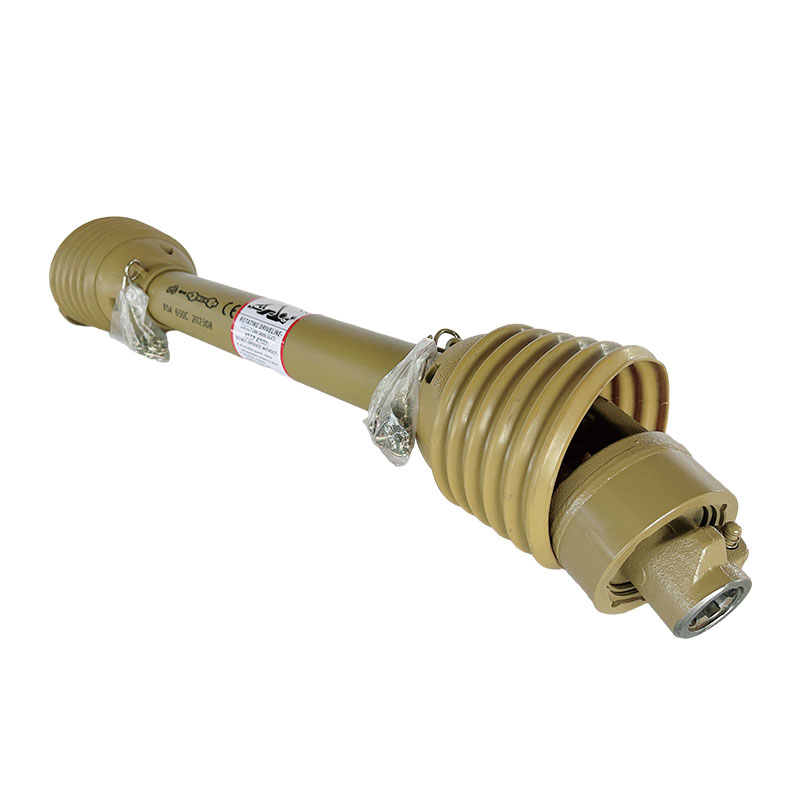 English
English Español
Español  Português
Português  русский
русский  Français
Français  日本語
日本語  Deutsch
Deutsch  tiếng Việt
tiếng Việt  Italiano
Italiano  Nederlands
Nederlands  ภาษาไทย
ภาษาไทย  Polski
Polski  한국어
한국어  Svenska
Svenska  magyar
magyar  Malay
Malay  বাংলা ভাষার
বাংলা ভাষার  Dansk
Dansk  Suomi
Suomi  हिन्दी
हिन्दी  Pilipino
Pilipino  Türkçe
Türkçe  Gaeilge
Gaeilge  العربية
العربية  Indonesia
Indonesia  Norsk
Norsk  تمل
تمل  český
český  ελληνικά
ελληνικά  український
український  Javanese
Javanese  فارسی
فارسی  தமிழ்
தமிழ்  తెలుగు
తెలుగు  नेपाली
नेपाली  Burmese
Burmese  български
български  ລາວ
ລາວ  Latine
Latine  Қазақша
Қазақша  Euskal
Euskal  Azərbaycan
Azərbaycan  Slovenský jazyk
Slovenský jazyk  Македонски
Македонски  Lietuvos
Lietuvos  Eesti Keel
Eesti Keel  Română
Română  Slovenski
Slovenski  मराठी
मराठी  Srpski језик
Srpski језик
What are the benefits of using a PTO shaft for power harrows?
2024-09-18

What are the benefits of using a PTO Shaft for Power Harrows?
1. Improve Soil Quality: PTO Shafts for Power Harrows are important for preparing soil for cultivation. They are specially designed to work the soil to the right depth, ensuring proper development of plant roots and ultimately improving the quality of the soil.
2. Time-Saving: Using a PTO shaft for power harrows is a time-efficient way to prepare the soil for planting. It can cover a large area of land in a short period, which is particularly important during high to growth periods.
3. Cost-Effective: PTO shafts for power harrows are an affordable alternative to other soil preparation methods, such as plowing or rotavating. Farmers can save money by using this tool.
4. Easy to Use: PTO shafts for power harrows are easy to use and require minimal training. They are also easy to attach and detach from the tractor's PTO system.
Why is the PTO Shaft for Power Harrows important for farming?
The PTO Shaft for Power Harrows is essential for farming because it provides numerous benefits. It helps farmers to prepare the soil for cultivation, which is crucial for plant growth and ultimately increasing crop yields. Additionally, it is time-efficient and cost-effective, making it an ideal tool for farmers looking to save time and money.
What factors should be considered when choosing a PTO Shaft for Power Harrows?
When choosing a PTO shaft for power harrows, farmers should consider a few factors:
1. The size of their farm: The size of the farm will determine the size of the power harrow needed.
2. The type of soil: Different soils require different power harrow tines to properly prepare the soil and avoid soil damage.
3. Tractor horsepower: The horsepower of the farming tractor should be considered to ensure that sufficient energy is available to provide the necessary power for the attached power harrow.
Conclusion
Overall, PTO shafts for power harrows are an indispensable tool for modern agriculture. It is crucial to select the right PTO shaft that meets the specific requirements of the farming practice. With the benefits of time and cost savings, improved productivity, and improved soil health, farmers could ensure high crop yields and high profitability.
Wenling Minghua Gear Co., Ltd. is a leading manufacturer of agricultural machinery, including PTO shafts for power harrows. Our company is dedicated to providing high-quality products and services to our customers. Contact us through our website at https://www.minghua-gear.com or email us at info@minghua-gear.com.
References:
1. Janzen, H.H., "Tillage-induced soil carbon dynamics", Soil and Tillage Research, Vol. 47, No. 1-2, 1998, pp. 291-302.
2. Davies, K.W., et al., "Soil disturbance and plant competition interact to impact small-scale spatial patterns in a sagebrush steppe community", Plant Ecology, Vol. 216, No. 4, 2015, pp. 539-551.
3. Hobbs, P.R., et al., Tillage effects on soil properties and crop production in the Central Mexican Highlands", Soil and Tillage Research, Vol. 28, No. 1, 1993, pp. 67-81.
4. Munro, R.C., et al., "Soil compaction on crop growth and yield in different planting systems", Soil Science Society of America Journal, Vol. 74, No. 3, 2010, pp. 954-963.
5. Sainju, U.M., et al., "Soil moisture, temperature, and maize yield responses to subsoiling and chiseling", Soil Science Society of America Journal, Vol. 70, No. 1, 2006, pp. 249-256.
6. Chung, S.O., et al., "Soil thermal properties and their relationships with soil physical and chemical properties in different soil tillage and residue management systems", Soil Science Society of America Journal, Vol. 75, No. 3, 2011, pp. 1095-1103.
7. Blevins, R.L., et al., "Surface soil property responses to different tillage methods", Soil Science Society of America Journal, Vol. 69, No. 1, 2005, pp. 155-161.
8. Goslee, S.C., et al., "Soil carbon and nitrogen responses to tillage and cover crop on a Pennsylvania Alfisol", Soil Science Society of America Journal, Vol. 65, No. 2, 2001, pp. 613-621.
9. Arnold, J.G., "Sediment yield estimation with the Soil and Water Assessment Tool (SWAT) for large river basins", Journal of American Water Resources Association, Vol. 34, No. 1, 1998, pp. 90-100.
10. Brendlen, I., et al., "Effect of long-term crop rotation and tillage on soil nitrogen availability and corn in western Illinois", Soil Science Society of America Journal, Vol. 72, No. 1, 2008, pp. 45-54.




